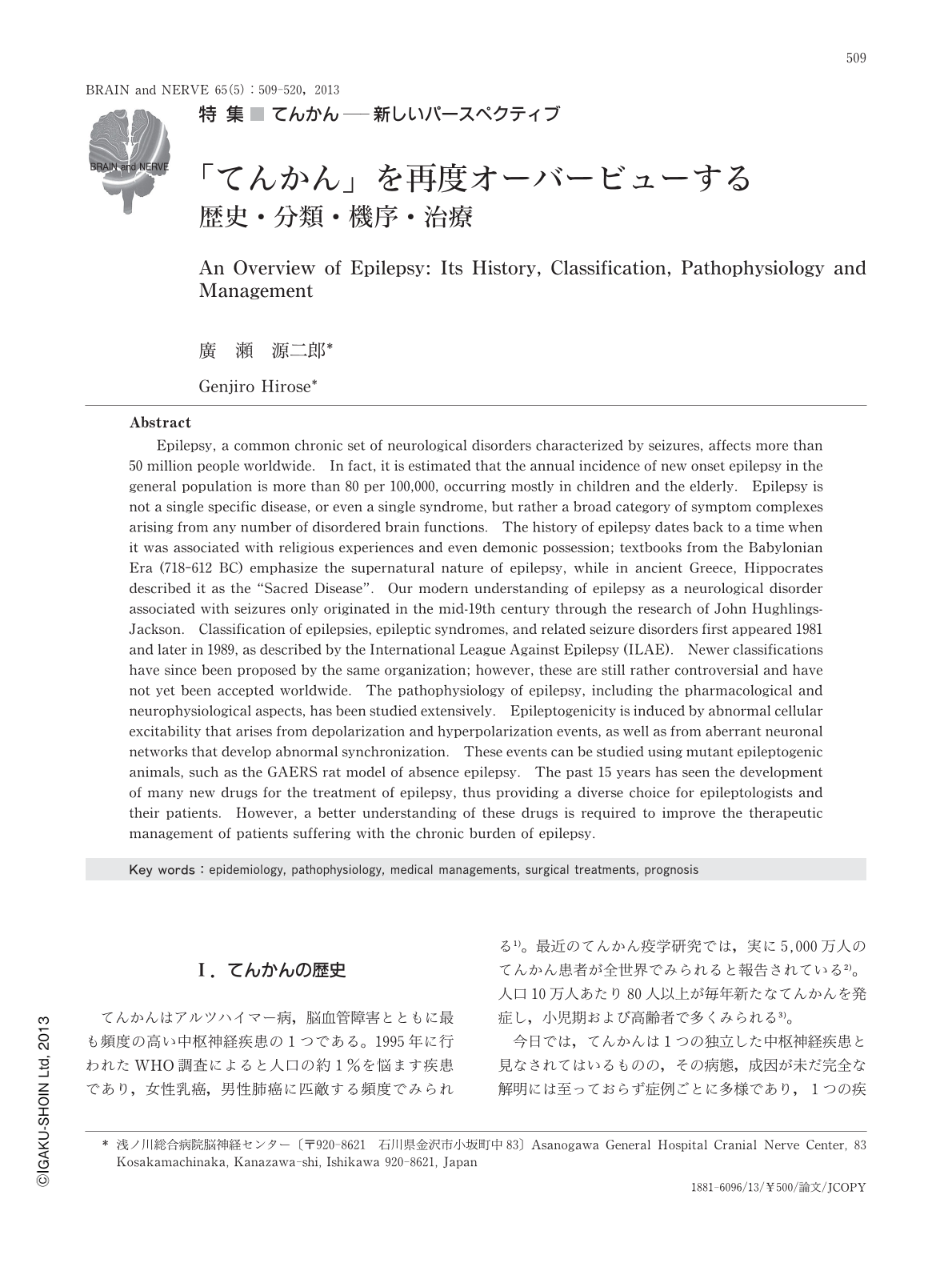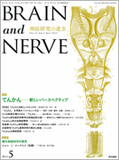Japanese
English
- 有料閲覧
- Abstract 文献概要
- 1ページ目 Look Inside
- 参考文献 Reference
Ⅰ.てんかんの歴史
てんかんはアルツハイマー病,脳血管障害とともに最も頻度の高い中枢神経疾患の1つである。1995年に行われたWHO調査によると人口の約1%を悩ます疾患であり,女性乳癌,男性肺癌に匹敵する頻度でみられる1)。最近のてんかん疫学研究では,実に5,000万人のてんかん患者が全世界でみられると報告されている2)。人口10万人あたり80人以上が毎年新たなてんかんを発症し,小児期および高齢者で多くみられる3)。
今日では,てんかんは1つの独立した中枢神経疾患と見なされてはいるものの,その病態,成因が未だ完全な解明には至っておらず症例ごとに多様であり,1つの疾患概念でまとめきれない。そのため,てんかん専門家は複数呼称のてんかん(epilepsies)やてんかん症候群(epileptic syndromes)と考えており,国際抗てんかん連盟(International League Against Epilepsy:ILAE)国際分類でも複数呼称が使われている。すなわち,てんかんは未だに疾患単位か症候群かについて疑義のある中枢神経疾患といえよう。
Abstract
Epilepsy, a common chronic set of neurological disorders characterized by seizures, affects more than 50 million people worldwide. In fact, it is estimated that the annual incidence of new onset epilepsy in the general population is more than 80 per 100,000, occurring mostly in children and the elderly. Epilepsy is not a single specific disease, or even a single syndrome, but rather a broad category of symptom complexes arising from any number of disordered brain functions. The history of epilepsy dates back to a time when it was associated with religious experiences and even demonic possession; textbooks from the Babylonian Era (718-612 BC) emphasize the supernatural nature of epilepsy, while in ancient Greece, Hippocrates described it as the "Sacred Disease". Our modern understanding of epilepsy as a neurological disorder associated with seizures only originated in the mid-19th century through the research of John Hughlings-Jackson. Classification of epilepsies, epileptic syndromes, and related seizure disorders first appeared 1981 and later in 1989, as described by the International League Against Epilepsy (ILAE). Newer classifications have since been proposed by the same organization; however, these are still rather controversial and have not yet been accepted worldwide. The pathophysiology of epilepsy, including the pharmacological and neurophysiological aspects, has been studied extensively. Epileptogenicity is induced by abnormal cellular excitability that arises from depolarization and hyperpolarization events, as well as from aberrant neuronal networks that develop abnormal synchronization. These events can be studied using mutant epileptogenic animals, such as the GAERS rat model of absence epilepsy. The past 15 years has seen the development of many new drugs for the treatment of epilepsy, thus providing a diverse choice for epileptologists and their patients. However, a better understanding of these drugs is required to improve the therapeutic management of patients suffering with the chronic burden of epilepsy.

Copyright © 2013, Igaku-Shoin Ltd. All rights reserved.


